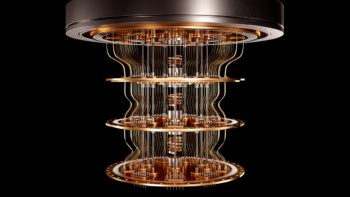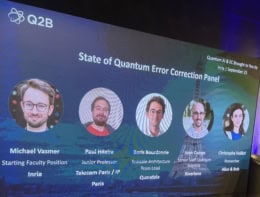
Ever since the double-slit experiment was performed, physicists have known that light can be observed as either a wave or a stream of particles. For everyday imaging applications, it is the wave-like aspect of light that manifests, with receptors (natural or artificial) capturing the information contained within the light waves to “see” the scene being observed.
Now, Chloé Vernière and Hugo Defienne from the Paris Institute of Nanoscience at Sorbonne University have used quantum correlations to encode an image into light such that it only becomes visible when particles of light (photons) are observed by a single-photon sensitive camera – otherwise the image is hidden from view.
Encoding information in quantum correlations
In a study described in Physical Review Letters, Vernière and Defienne managed to hide an image of a cat from conventional light measurement devices by encoding the information in quantum entangled photons, known as a photon-pair correlation. To achieve this, they shaped spatial correlations between entangled photons – in the form of arbitrary amplitude and phase objects – to encode image information within the pair correlation. Once the information is encoded into the photon pairs, it is undetectable by conventional measurements. Instead, a single-photon detector known as an electron-multiplied charge couple device (EMCCD) camera is needed to “show” the hidden image.
“Quantum entanglement is a fascinating phenomenon, central to many quantum applications and a driving concept behind our research,” says Defienne. “In our previous work, we demonstrated that, in certain cases, quantum correlations between photons are more resistant to external disturbances, such as noise or optical scattering, than classical light. Inspired by this, we wondered how this resilience could be leveraged for imaging. We needed to use these correlations as a support – a ‘canvas’ – to imprint our image, which is exactly what we’ve achieved in this work.”
How to hide an image
The researchers used a technique known as spontaneous parametric down-conversion (SPDC), which is used in many quantum optics experiments, to generate the entangled photons. SPDC is a nonlinear process that uses a nonlinear crystal (NLC) to split a single high-energy photon from a pump beam into two lower energy entangled photons. The properties of the lower energy photons are governed by the geometry and type of the NLC and the characteristics of the pump beam.
In this study, the researchers used a continuous-wave laser that produced a collimated beam of horizontally polarized 405 nm light to illuminate a standing cat-shaped mask, which was then Fourier imaged onto an NLC using a lens. The spatially entangled near-infrared (810 nm) photons, produced after passing through the NLC, were then detected using another lens and the EMCCD.
This SPDC process produces an encoded image of a cat. This image does not appear on regular camera film and only becomes visible when the photons are counted one by one using the EMCCD. This allowed the image of the cat to be “hidden” in light and unobservable by traditional cameras.
“It is incredibly intriguing that an object’s image can be completely hidden when observed classically with a conventional camera, but then when you observe it ‘quantumly’ by counting the photons one by one and examining their correlations, you can actually see it,” says Vernière, a PhD student on the project. “For me, it is a completely new way of doing optical imaging, and I am hopeful that many powerful applications will emerge from it.”
What’s next?
This research has extended on previous work and Defienne says that the team’s next goal is to show that this new method of imaging has practical applications and is not just a scientific curiosity. “We know that images encoded in quantum correlations are more resistant to external disturbances – such as noise or scattering – than classical light. We aim to leverage this resilience to improve imaging depth in scattering media.”

Entangled photons enhance adaptive optical imaging
When asked about the applications that this development could impact, Defienne tells Physics World: “We hope to reduce sensitivity to scattering and achieve deeper imaging in biological tissues or longer-range communication through the atmosphere than traditional technologies allow. Even though we are still far from it, this could potentially improve medical diagnostics or long-range optical communications in the future.”



